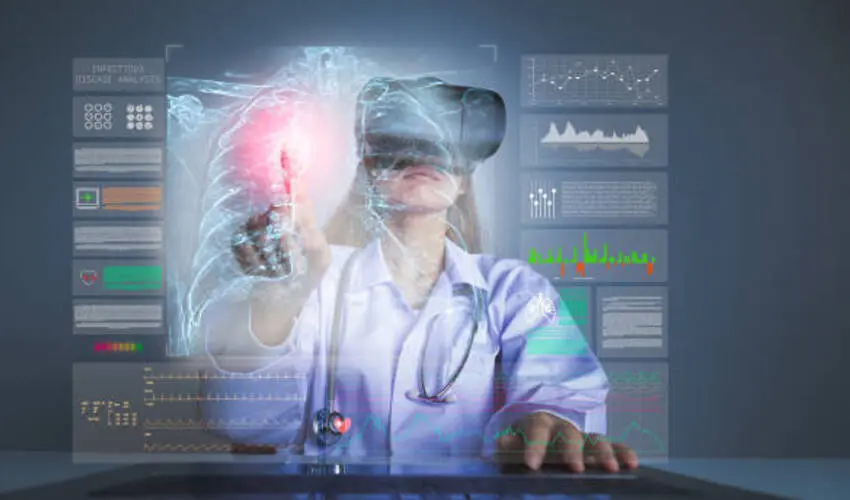Virtual medical scribe technology has truly been a game-changer in the healthcare world. Looking ahead, the future of this tech points towards incorporating artificial intelligence and natural language processing. These advancements aim to automate routine documentation, make medical processes run more smoothly, and ultimately boost the accuracy and efficiency of clinical notes.
Introduction
Medical scribe systems are a vital part of the healthcare landscape. The main goal of scribing is to make sure medical records are spot-on, which naturally leads to better accuracy in medical coding and billing. When a medical scribe works from a distance, like remotely, they’re known as a virtual medical scribe.
Enhanced Natural Language Processing (NLP)
Natural Language Processing (NLP) is a key component of the tech that powers virtual scribes. As NLP algorithms get smarter, virtual scribes can better understand and accurately transcribe complex medical discussions. This improvement results in more precise documentation and less need for doctors and nurses to manually input data themselves. For example, advanced NLP makes it much easier for virtual scribes to interact with electronic health record (EHR) systems, helping healthcare providers keep accurate records more quickly and efficiently.
Contextual Understanding and Decision Support
The tech that powers virtual scribes isn’t just about taking dictation and creating records anymore. What’s coming next for these tools is all about helping them truly understand their environment and assist people with making choices. Think of these smarter systems as being able to listen in on patient conversations as they happen, pick out the important details, and then offer suggestions to healthcare providers right there. By giving insights that are relevant to the specific situation, virtual scribes can really help doctors and nurses make clinical decisions, ensuring patients receive accurate and personalized care.
Integration with Wearable Devices and IoT
Virtual medical scribe technology can tap into devices like smartwatches or biosensors to gather information in real-time during a patient visit. These virtual scribes can then analyze that data, mix it with the context of the visit, and present doctors with a complete picture. This kind of integration could make patient evaluations in future healthcare much more precise and could also make it easier for doctors to care for people even before they get sick.
Multilingual and Cross-cultural Capabilities
As our world becomes increasingly diverse, virtual scribe technology will need to adapt to the wide range of languages and cultures out there. Looking ahead, developers will focus on creating virtual scribes capable of accurately transcribing and translating conversations across different languages, and even speaking multiple languages fluently. It will also be crucial for these tools to grasp cultural nuances, ensuring that healthcare providers and patients from various backgrounds can communicate effectively. These advancements will foster a more inclusive environment and make healthcare more accessible for everyone, regardless of their background.
Security and Privacy Measures
As virtual medical scribe technology continues to evolve and become more widespread, safeguarding patient information will be absolutely critical. Future developments will prioritize robust encryption, secure methods for transmitting data, and strict controls over who can access it, all aimed at protecting sensitive patient details. For instance, adhering to established regulations like HIPAA (Health Insurance Portability and Accountability Act) will be essential for the responsible development of virtual scribe tech. Ultimately, for these tools to be widely adopted, it’s vital to strike the right balance between making data integration smooth and seamless while maintaining the highest standards of security. Companies like Scriberunner offer HIPAA-compliant scribing services, which help reduce the potential for legal complications down the line.
Telemedicine and Remote Support
As telemedicine becomes more widespread, the help that virtual medical scribes offer will become even more vital for healthcare providers who work remotely. During telemedicine appointments, these remote scribes can lend a hand to doctors, making sure patient records are precise and complete as events unfold. This helps keep care seamless and improves the telemedicine experience for both healthcare teams and their patients.
Data Analytics and Clinical Decision Support
Virtual scribe technology has the power to produce useful data insights that healthcare pros can tap into for data analysis and support in making clinical decisions. By digging into large pools of anonymized patient information, these systems can spot patterns, trends, and connections that could aid in medical research, disease prevention, and crafting personalized treatment plans. This data-focused method could greatly enhance healthcare results and the management of public health.
Conclusion
Virtual medical scribe tech holds the promise of reshaping how healthcare is delivered down the line. Key developments and fresh ideas in this area include improvements in natural language processing, better context understanding, integration with wearable tech, multilingual features, and beefed-up security measures.
Frequently Asked Questions (FAQs)
What are the goals of a virtual scribe?
Here is a list of what a virtual scribe does:
- Accurate and Complete Documentation
- Workflow Optimization
- Enhanced Patient Care
- Documentation Consistency
- Time Management
- Documentation Compliance
- Data Analysis and Reporting
What is the scope of a medical scribe?
The general scope of a medical scribe typically includes:
- Documentation
- Chart Review
- Communication and Coordination
- Administrative Support
Why choose a virtual medical scribe?
Here are some key reasons why Medical Scribe Virtual is a beneficial option:
- Cost-Effectiveness
- Flexibility and Accessibility
- Efficient Workflow and Time Savings
- Scalability and Adaptability

